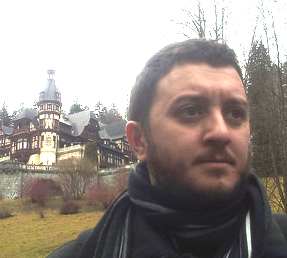
ELIXIR_containers_nextflow
ELIXIR VIB-CRG courses on containers (Docker + Singularity) and Nextflow.
Webpage https://biocorecrg.github.io/ELIXIR_containers_nextflow/
When & Where
26 & 27 Oct 2020 - online
Schedule:
- 9:30 - 11:00 - session
- 11:00 - 11:15 - break
- 11:15 - 12:45 - session
- 12:45 - 13:45 - lunch
- 13:45 - 15:15 - session
- 15:15 - 15:30 - break
- 15:30 - 17:00 - session
Target audience
Bioinformaticians with no or little knowledge of containers.
Requirements
If trainees bring their own laptop, they should install:
-
VNC viewer
-
Discord / Zoom / GoTo meeting
Format
2 full days:
- Day 1: Containers
- Introduction to containers
- History of containers
- What are containers? Why to use them?
- Containers vs. virtual machines
- Docker
- Installation
- Images and containers
- Docker architecture
- Docker files, Docker image layers, Docker caching
- Docker hub: get images from and load images to: push, pull
- Build and run Docker image from existing recipe:
- Build and from recipe build, run
- Use Docker image interactively run -it
- Checking running containers, stopping a starting containers: ps, rm
- Remove images: rmi
- Exporting containers into tar files and importing them back
- Tagging an image: tag
- Docker “recipes”:
- Understand the main sections: FROM, RUN, ADD, ENV, CP
- Write basic recipe: e.g. Ubuntu base layer + ncbi-blast
- Build and run.
- Working with volumes: docker run -v …
- Working with ports
- Singularity
- Installation ?
- Differences between Singularity and Docker: why and when to use one or the other. Pros and cons.
- Building a basic Singularity image
- Pull and run an image with Singularity, from Docker hub or local Docker daemon
- Singularity “recipes”
- Use Singularity image interactively: singularity shell
- Volumes in Singularity
- Instances
- Introduction to containers
- Day 2: Nextflow
- Installation, update and versioning
- Simple Nextflow pipeline given as an example:
- Run pipeline
- Going into detail
- understand config and pipeline (.nf) files
- work job directory structure
- PID and log files
- Pipeline modification and resume
- Basic concepts
- processes
- input
- output
- script
- when
- directives: tag, publishDir, etc.
- channels
- operators
- Write and run a simple Nextflow pipeline (e.g. print text, process a simple calculation)
- Executors
- local vs queue vs cloud systems
- memory, time and CPU allocation
- Including Docker and Singularity containers in Nextflow pipelines
- Additional functions
- Tracing, charts
- Workflow
- Mail notification
- Web monitoring: tower.nf
Learning objectives
- Learn the concept of containers: what is a container, what is an image ?
- Understand the difference between Docker and Singularity
- Understand a container’s “recipe”
- Learn about Docker hub
- Understand Nextflow’s basic concepts: processes, channels, …
- Learn how to write and run a Nextflow pipeline
Learning outcomes
- Docker images and containers: run, push, pull, remove
- Write Docker recipe
- Build and run Docker image
- Pull and push Docker container to / from Docker hub
- Pull Docker container as Singularity image
- Write and run a simple Nextflow pipeline
- Write and run a simple Nextflow pipeline using a Singularity container
Instructors
| Luca Cozzuto | Toni Hermoso |
|---|---|
 |
 |
from the CRG Bioinformatics core facility in Barcelona, Catalonia, Spain.
Prerequisites
Familiarity with the Linux command line
| Home | Next page |

